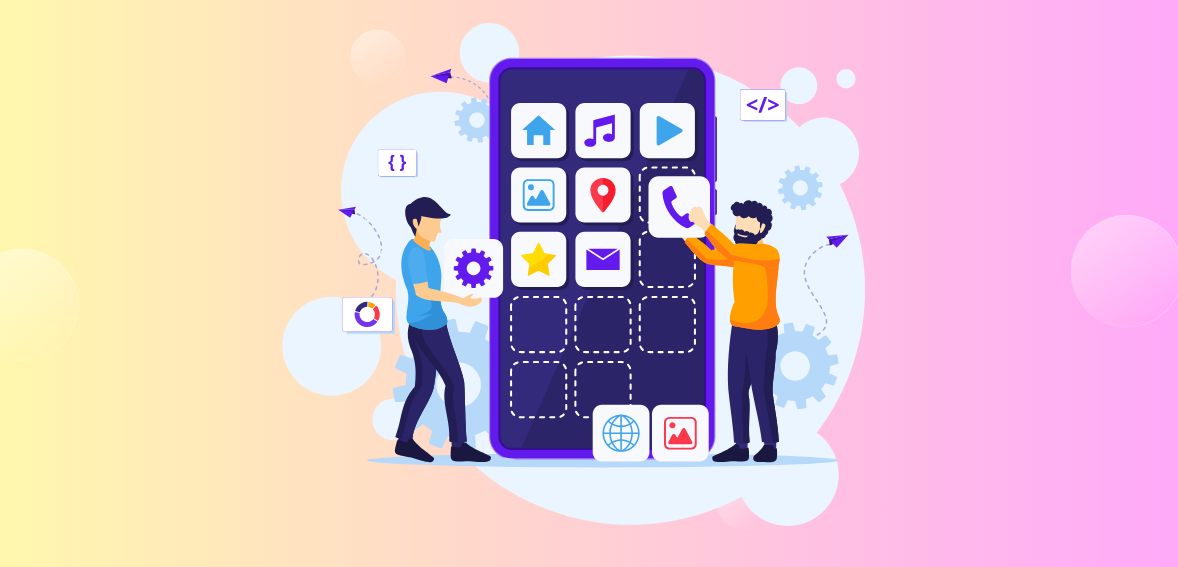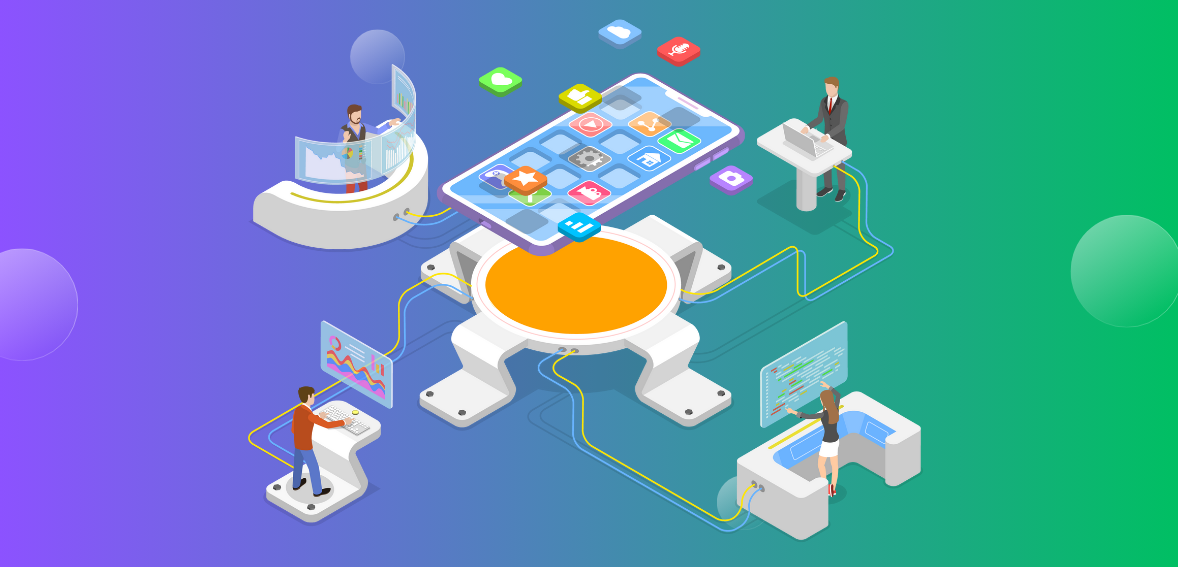Creating a mobile app for your business can seem like a daunting task, but it doesn’t have to be. With the right tools and resources, you can create a simple and effective mobile app that will help you reach new customers and grow your business.
nnnnStep 1: Define Your Goals
nnnnDefining your goals for your mobile app is an important step in the app development process. It involves identifying the specific objectives and outcomes you want your app to achieve. This can include things like increasing sales, improving customer engagement, providing a new way for customers to interact with your business or any other specific objectives that align with your overall business goals.
nnnnWhen defining your goals, it’s important to be as specific and measurable as possible. For example, instead of simply stating that you want to increase sales, you could set a specific target, such as increasing sales by 10% within the first six months of launching your app.
nnnnIt’s also important to consider your target audience when defining your goals. For example, if your target audience is primarily young professionals, your app may be focused on providing them with easy access to your products or services.
nnnnBy clearly defining your goals, you’ll be able to create an app that meets the needs of your customers and helps you achieve your business objectives. This will also help you to measure the success of your app and make any necessary adjustments to improve its performance.
nnnnStep 2: Choose Your Platform
nnnnChoosing the right platform for your mobile app is an important step in the app development process. There are two main platforms to choose from: iOS and Android. Each platform has its own unique features and benefits, so it’s important to consider which one will be the best fit for your business.
nnnniOS is the operating system used on Apple devices such as iPhone, iPad, and iPod Touch. It is known for its sleek design, high-quality apps, and strong security features. iOS apps are typically more expensive to develop than Android apps, but they tend to generate more revenue for developers.
nnnnAndroid, on the other hand, is an open-source operating system used on a wide range of devices from different manufacturers, such as Samsung, LG, and Google. It has a larger user base than iOS, which means that it can reach a wider audience. Android apps are typically less expensive to develop than iOS apps, but they may generate less revenue for developers.
nnnnWhen choosing a platform, it’s important to consider your target audience, budget, and the specific features and functionality you want your app to have. For example, if you’re targeting a specific demographic, such as iPhone users, iOS may be the way to go. If you want to reach the widest possible audience, Android may be the better choice.
nnnnIt’s also important to keep in mind that, regardless of the platform, you should make sure that the app is compatible with the latest versions of the operating system, as well as older versions, to ensure that it reaches the maximum number of users.
nnnnIn summary, the choice of platform will depend on the specific requirements of the app, the target audience, and the budget available. iOS and Android both have their own advantages and disadvantages, so it’s important to weigh the pros and cons of each before making a decision.
nnnnStep 3: Design Your App
nnnnDesigning your mobile app involves creating the layout, features, and overall look and feel of your app. It’s an important step in the app development process as it can greatly impact the user experience and usability of your app.
nnnnWhen designing your app, it’s important to keep your goals in mind and to ensure that the design is user-friendly and intuitive. This means that the navigation should be easy to understand and the layout should be clean and uncluttered. It’s also important to consider the visual elements of the app, such as color schemes and typography, to ensure that they are consistent with your brand and appeal to your target audience.
nnnnOne way to design your app is by using wireframing and prototyping tools. These tools allow you to create a visual representation of your app before you start building it. This can help you to visualize the layout, features, and overall look and feel of your app, and make any necessary changes before it’s built.
nnnnAnother way to design your app is by using design guidelines and best practices. This can help you to create a consistent and professional look for your app, and ensure that it’s easy to use and navigate.
nnnnIn summary, designing your app is an important step in the app development process. It involves creating the layout, features, and overall look and feel of your app to ensure that it meets the needs of your customers and achieves your business objectives. Wireframing and prototyping tools, as well as design guidelines and best practices, can help you to create a user-friendly and visually appealing app that aligns with your brand and target audience.
nnnnStep 4: Build Your App
nnnnBuilding your mobile app involves using various tools and resources to create the actual code and functionality of your app. It’s an important step in the app development process as it brings your design and goals to life.
nnnnThere are several tools and resources available to help you build your app, such as:
nnnn- n
- App builders: These are platforms that allow you to create your app without writing any code. They typically provide a drag-and-drop interface and can be a great option for those who are not familiar with coding. nnnn
- Code editors: These are tools that allow you to write and edit code for your app. They are typically used by developers and can be a great option for those who are familiar with coding. nnnn
- SDKs (Software Development Kits): These are sets of tools and resources that are provided by the platform (iOS or Android) to help you build your app. They typically include documentation, sample code, and other resources that can help you to understand how to build an app for a specific platform. n
When building your app, it’s important to ensure that it’s compatible with the latest versions of the operating system, as well as older versions, to ensure that it reaches the maximum number of users. It’s also important to ensure that your app is optimized for different screen sizes and resolutions to ensure that it looks and works great on all devices.
nnnnIn summary, building your mobile app involves using various tools and resources to create the actual code and functionality of your app. App builders, code editors, and SDKs are some of the tools available to help you build your app. It’s important to ensure that the app is compatible with different versions of the operating system and optimized for different screen sizes and resolutions.
nnnnStep 5: Test and Launch Your App
nnnnTesting and launching your mobile app are the final steps in the app development process. Testing is an important step as it ensures that your app is functioning properly and that there are no bugs or errors before it’s released to the public. This is where beta testing comes in.
nnnnBeta testing is the process of testing your app with a group of people, usually selected from your target audience, before it’s released to the public. This allows you to gather feedback and identify any issues that need to be addressed. Beta testing can be done in-house, or you can use a beta testing platform to distribute your app to beta testers.
nnnnOnce your app has been tested and refined, it’s time to launch it. This can be done through the app store (iOS App Store or Google Play Store) or through other distribution channels. It’s important to promote your app through various channels, such as social media, email marketing, and advertising, to ensure that it reaches the widest possible audience.
nnnnIn summary, testing and launching your mobile app are the final steps in the app development process. Testing is an important step as it ensures that your app is functioning properly and that there are no bugs or errors before it’s released to the public. Beta testing allows you to gather feedback and identify any issues that need to be addressed. Once your app has been tested and refined, it’s time to launch it and promote it through various channels to reach the widest possible audience.
nnnnConclusion
nnnnCreating a mobile app for your business doesn’t have to be difficult. By following these steps, you can create a simple and effective app that will help you reach new customers and grow your business.
nnnnOverall, creating a mobile app for your business can be a great way to reach new customers, improve customer engagement, and grow your business. By following these steps and using the right tools, you can create a simple and effective app that will help you achieve your goals.n




